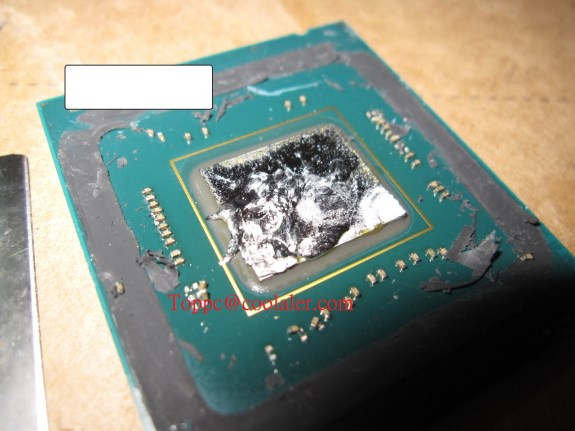
A user in the Coolator forums has popped the lid on a purported Core i7-4960X, revealing old-school solder rather than the TIM used on Intel's recent desktop CPUs. This isn't conclusive evidence, but I wouldn't be surprised if the report were accurate. Like Sandy Bridge-E, Ivy-E is basically a server-grade Xeon rebranded for duty in high-end desktops. It doesn't make sense for Intel to skimp on the thermal performance of a product designed for toasty server racks. The higher margins commanded by Xeon-based parts should cover any additional cost associated with the solder, as well.

Source: The Tech Report